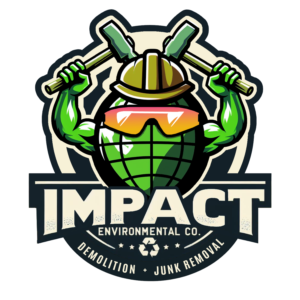These profits have enabled the largest hauling companies to control the real estate dedicated to sorting and storing their waste. Transfer Stations, Material Recovery Facilities (MRFs), and Landfills are almost entirely owned and operated by the same corporations that offer pick-up services. To compound profits, these locations charge the public (in California, nearly one-third of all waste is self-hauled) a tipping fee for drop-off. These fees aren’t regulated and can vary depending on location, capacity, or form of waste.
The difficulty with a single enterprise controlling not only the logistics of removal, but of the enforcement of decomposition, means that nearly everything is ultimately landfilled. And as waste is directed to a landfill, it becomes its own energy commodity.
As waste compiles, the various states of matter involved with decomposition allow toxins, leachate and greenhouse gases to accumulate; organic waste offers bacteria a host to break down the waste. Decaying rubbish produces weak acidic chemicals which combine with liquids to form leachate and landfill gas. Coupled with toxic items such as televisions, computers and other electronic appliances (which contain a long list of hazardous substances, including mercury, arsenic, cadmium, PVC, solvents, acids and lead), these toxins leach into the soil and groundwater and become environmental hazards for years. Leachate is the liquid formed when waste breaks down in the landfill and water filters through that waste. This liquid is highly toxic and can pollute land, ground water and local waterways perpetually.
Depending on rainfall, a single landfill site can easily produce several Olympic-sized swimming pools of leachate each year. Some leachate is reabsorbed when passed back into landfill, but the rest filters through again, picking up more toxins with each pass.
Not to be outdone, greenhouse gas production is perhaps the biggest environmental threat posed by landfills. As organic material is compacted down and covered, oxygen is displaced, causing the waste to break down in an anaerobic process. Eventually this releases methane, a greenhouse gas that is about 25 times more potent than carbon dioxide. It’s also flammable and can become dangerous if allowed to build up in concentration. So how much methane is produced by a typical landfill site? Enough to fuel a power station.
Landfill gas is comprised of 50% methane and 50% carbon dioxide, and its capture is an additional challenge. Landfills are the third-largest source of human-related methane emissions in the United States, accounting for approximately 14.5% of these emissions in 2020. The methane emissions from landfills in 2020 were equivalent to the greenhouse gas emissions from about 20.3 million passenger vehicles driven for one year. At the same time, methane emissions from landfills represent a lost opportunity to capture and use a significant energy resource.
As far as waste-to-energy processes go, decomposition in a landfill requires a low investment for a stable benefit. Instead of escaping into the air, landfill gas can be captured, converted, and used as a renewable energy resource. But with current emissions data, it’s clear that waste companies could do more to comprehensively capture this gas (the highest percentage of captured methane gas for modern landfills is only 85%). Instead, these companies are looking to add in MORE decomposition for profit: various landfill gas incentives exist for United States projects at the federal and state level. The Department of the Treasury, Department of Energy, Department of Agriculture, and Department of Commerce all provide federal incentives for landfill gas capture projects. Typically, incentives are in the form of tax credits, bonds, or grants. For example, the Renewable Electricity Production Tax Credit (PTC) gives a corporate tax credit of 1.1 cents per kWh for landfill projects above 150 kW. With benchmarks set, the larger the landfill the more energy captured. It’s no wonder that the largest garbage companies in America are converting nearly their entire vehicle fleet to run on “clean” captured landfill gas.









